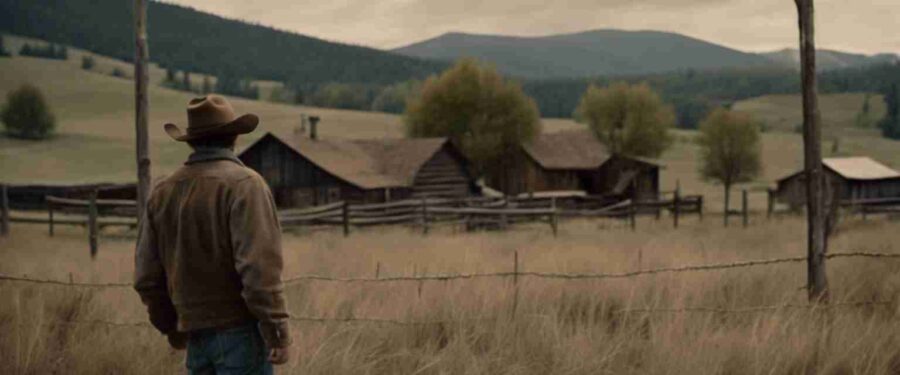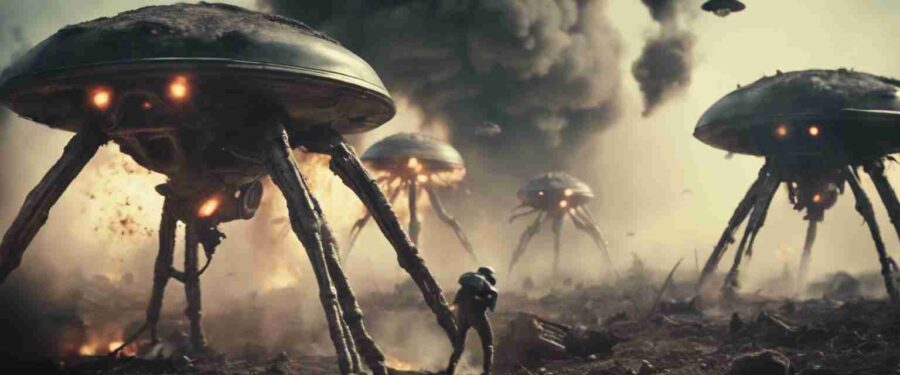Definition: The setting in film is the time and place where a story takes place. It encompasses the physical environment, such as the location, architecture, geography, and cultural and historical context. The movie setting plays a crucial role in establishing a film’s mood, atmosphere, and overall tone, influencing the story, characters, and audience’s perception.
There are several different types of settings commonly found in movies:
Urban Setting

This setting takes place in a city or metropolitan area, often portraying the hustle and bustle of urban life.
The movie “Lost in Translation” (2003), directed by Sofia Coppola, is set in modern-day Tokyo.
It explores the disorientation and loneliness experienced by two strangers, an aging actor and a young woman, as they navigate the city’s bustling streets, neon signs, and vibrant nightlife.
The urban setting provides a backdrop for their emotional journey and sense of alienation.
Rural Setting

A rural setting primarily occurs in the countryside or small towns, emphasizing a slower pace of life and a closer connection to nature.
The movie “Brokeback Mountain” (2005), directed by Ang Lee, predominantly unfolds in the rural landscapes of Wyoming, showcasing the isolation and beauty of the open range.
See famous movies filmed in Andalusia, Spain.
Historical Setting

Films with a historical setting are set in a specific time and often feature accurate costumes, architecture, and cultural details.
“Schindler’s List” (1993), directed by Steven Spielberg, is set during World War II and the Holocaust, capturing the historical accuracy of the era and immersing the audience in the harrowing events.
Fantasy Setting

Fantasy settings transport viewers to imaginary or otherworldly realms, often filled with magical elements, mythical creatures, and extraordinary landscapes.
“The Lord of the Rings” trilogy (2001-2003), directed by Peter Jackson, takes place in the fictional Middle-earth, showcasing breathtaking landscapes that bring the fantastical world to life.
Sci-Fi Setting

Science fiction settings are characterized by futuristic technology, space exploration, and advanced societies.
The “Star Wars” film series is set in a futuristic galaxy far, far away. It features advanced technology, interstellar travel, and various alien species.
The setting includes planets like Tatooine, Hoth, and Coruscant, each with unique characteristics and cultures.
A movie like “Blade Runner” (1982) set in future Los Angeles is set both in an urban and sci-fi setting.
See some of the best Star Wars quotes about the force.
The Importance and Different Functions of Movie Settings
The movie setting plays a crucial role in storytelling and significantly shapes the overall cinematic experience:
Enhancing Atmosphere and Mood: The setting can create a specific atmosphere and mood that complements the story.
Whether it is a dark and eerie castle, a bustling city, or a serene countryside, the setting can instantly immerse the audience into the world of the film and evoke specific emotions.
Establishing Time and Place: The setting helps to establish the period and geographic location of the story.
It provides contextual information and helps the audience understand the cultural, social, and historical background of the characters and their actions.
Reflecting Characterization: The setting can be used to reflect the personalities and motivations of the characters.
For example, a character living in a luxurious penthouse may be portrayed as wealthy and successful. In contrast, a character in a shabby apartment might be depicted as struggling or facing hardship.
Supporting Narrative and Plot: The setting often plays a vital role in advancing the narrative and plot of a movie. It can provide opportunities for conflict, tension, and resolution.
Read more about narrative structures in film.
For instance, a thrilling chase scene in a crowded marketplace or a romantic encounter in a picturesque park can add depth and excitement to the story.
Symbolism and Metaphor: The setting can symbolically convey deeper meanings and metaphors. It can represent themes, ideas, or cultural contexts the filmmaker wants to explore.
Read more about symbols in movies.
For example, a deserted island can symbolize isolation or freedom, while a claustrophobic spaceship can represent confinement or the limits of human exploration.
Visual Appeal: The setting can contribute to the film’s visual aesthetics.
Scenic landscapes, grand architectural structures, or unique locations can enhance the visual impact and make the movie visually captivating.
The difference between Context and Setting
Context and setting play crucial roles in storytelling, but distinct elements serve different purposes.
While context provides the background information and details that shape the story, the setting helps to immerse the audience in the world of the film, enhancing the overall cinematic experience.
| Context | Setting |
|---|---|
| The circumstances or background in which a film takes place. | The physical location or time period in which a film is set. |
| Provides information about the characters, their relationships, and the overall story. | Creates the atmosphere, mood, and visual elements of the film. |
| Can be influenced by social, cultural, and historical factors. | Can be real, fictional, or a combination of both. |
| Helps the audience understand the motivations and actions of the characters. | Sets the stage for the story and affects how the audience perceives the events. |
| Can change throughout the film to provide new information or shift the audience’s perspective. | Can be used strategically to enhance the storytelling or create specific emotions. |
Both context and setting are important in film as they work together to create a rich and meaningful storytelling experience.
Conclusion
Settings in films serve as more than mere backdrops; they are essential storytelling tools.
By carefully selecting and crafting the setting, filmmakers can evoke specific emotions, establish the narrative context, and transport the audience to different worlds.
Whether it’s the urban landscapes of “Blade Runner,” the historical accuracy of “Schindler’s List,” or the fantastical realms of “The Lord of the Rings,” settings play a vital role in captivating audiences and enhancing the overall cinematic experience.
Up Next: How to do Location Scouting.

